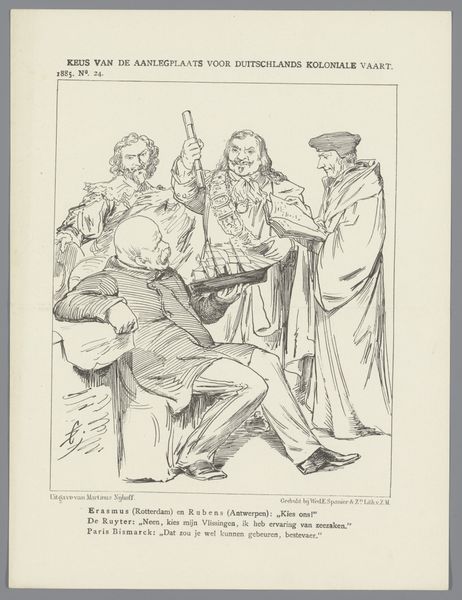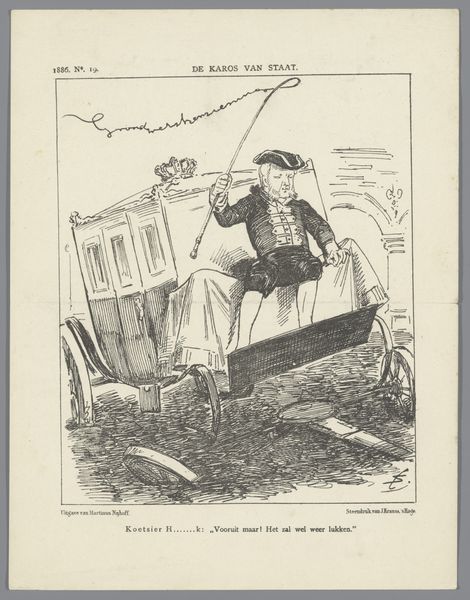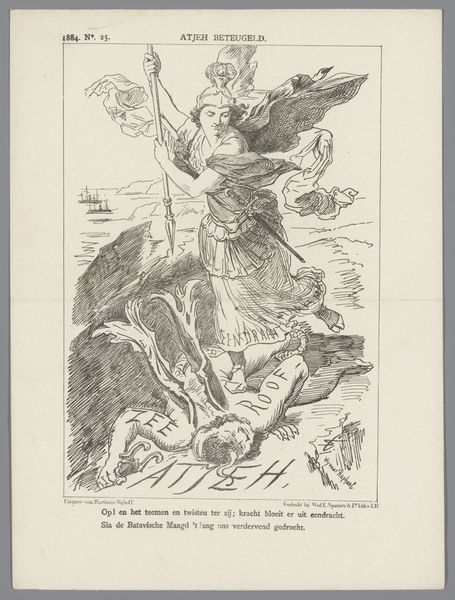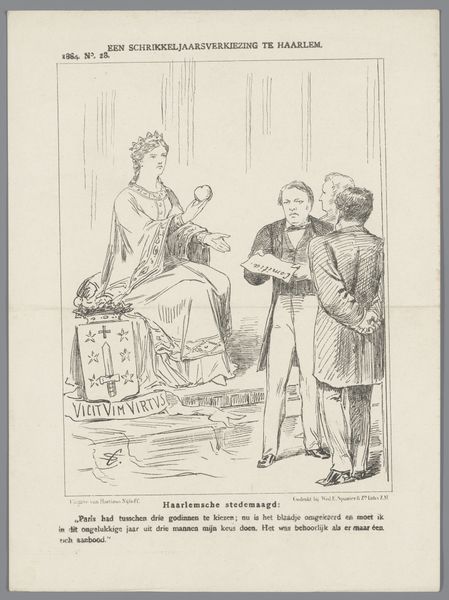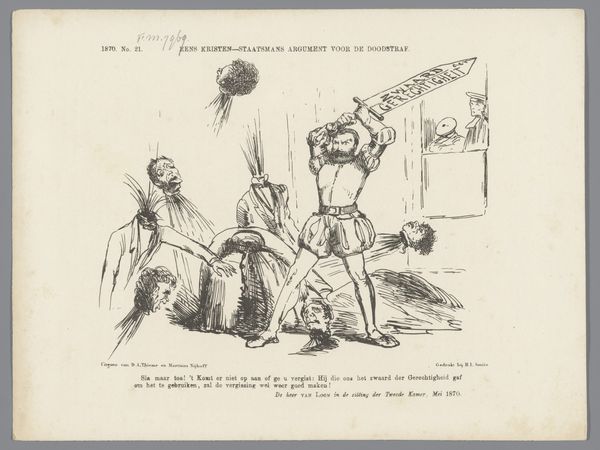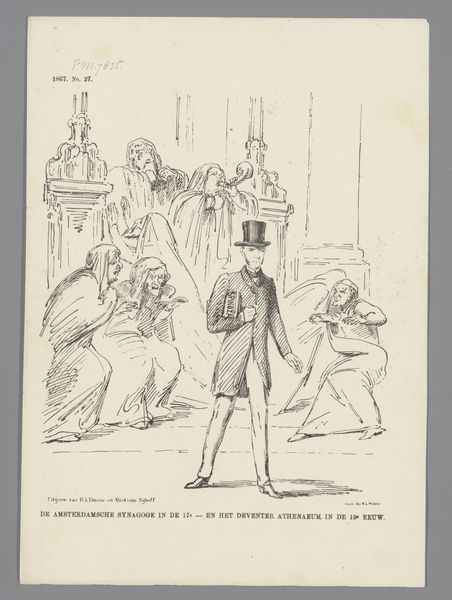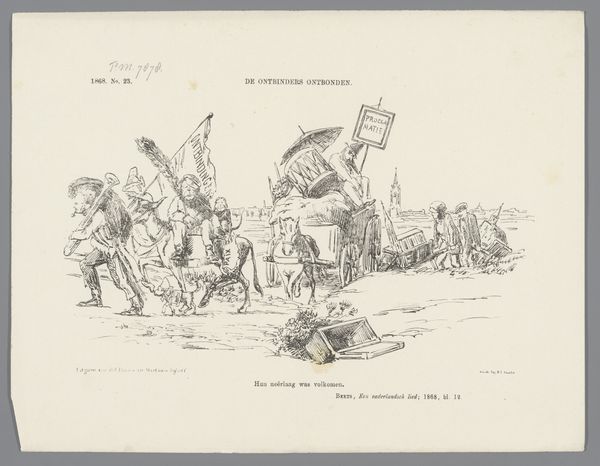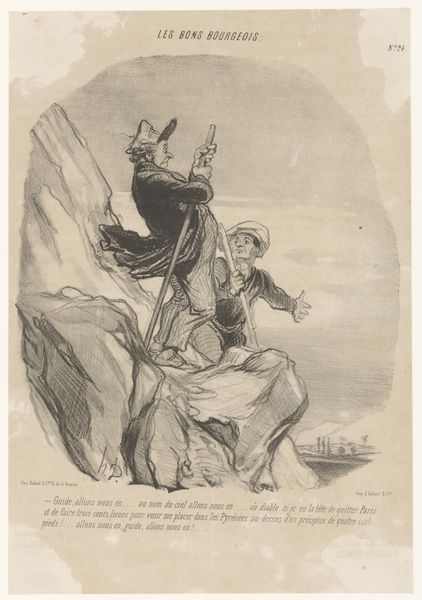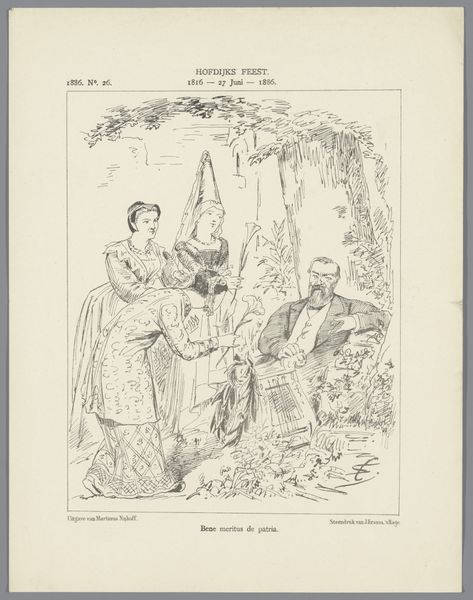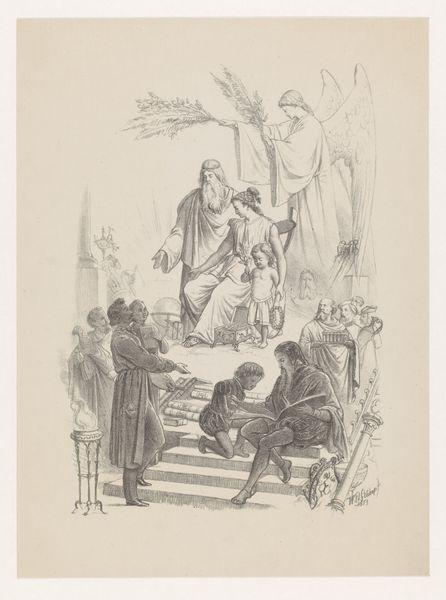
drawing, ink, pen
#
drawing
#
pen sketch
#
caricature
#
ink
#
pen
#
history-painting
Dimensions: height 275 mm, width 215 mm
Copyright: Rijks Museum: Open Domain
Editor: Here we have "Spotprent op minister Van Zuylen, 1867," a pen and ink drawing by Johan Michaël Schmidt Crans. It looks like a political cartoon. There's a really dramatic scene unfolding, but I'm struggling to grasp the full message. How would you interpret this work in its historical context? Curator: This piece, likely published, presents a potent visual critique of Minister Van Zuylen. The imagery suggests a complex interplay between power, sacrifice, and perhaps, self-destruction. Notice how the Minister is positioned before a building labeled "2de Kamer" – The Second Chamber of Parliament. What does the sword and the figure to the right possibly symbolize? Editor: Right! The woman looks like a classical figure of justice, holding the sword above the Minister's head! And he seems to be standing in front of a small child… it alludes to Abraham's sacrifice, perhaps? Curator: Precisely. This connects the immediate political situation to broader cultural narratives of sacrifice and authority. It is critiquing state authority – this references Van Zuylen, and his position of political power, while the 'child' represents the literal sacrifice they make as elected officials. What might the inclusion of this classical, even biblical, iconography imply about public perception of governmental authority at that time? Editor: So, the artist uses this symbolic language to suggest the Minister’s policies, or perhaps his entire political approach, demanded a sacrifice, maybe to the detriment of the public? The inclusion of what looks to be babies being drowned in a pot right in front of the Chamber of Parliament just drives the whole point home, I guess! Curator: Precisely. Cartoons like this are crucial documents because they reveal public sentiment. They speak volumes about the political climate, available for broad consumption, using humor to unpack a powerful message. It's not just art; it's a historical argument, packaged for a popular audience. Editor: I see it now! It’s incredible how much a simple drawing can unpack about the public role of politicians in the nineteenth century. I initially saw a simple cartoon, but it reveals a critical and influential commentary on government and power.
Comments
No comments
Be the first to comment and join the conversation on the ultimate creative platform.

